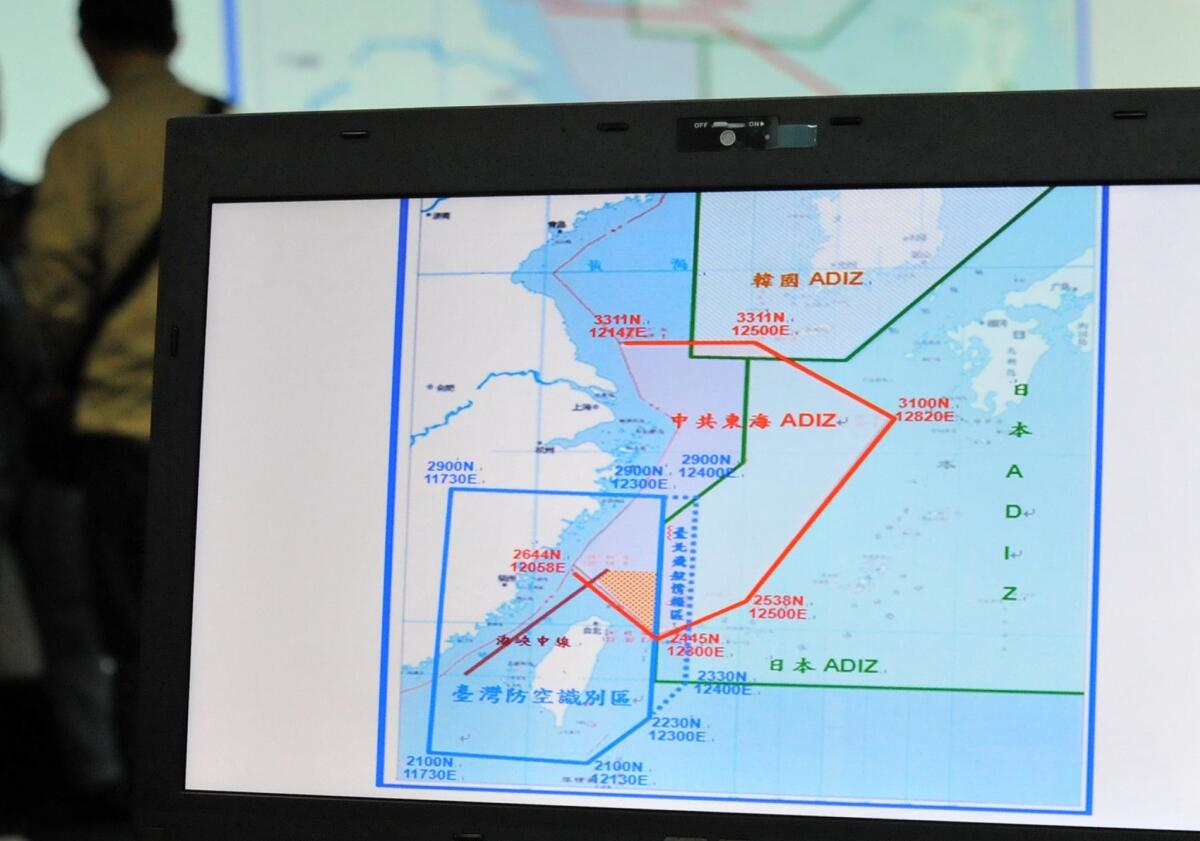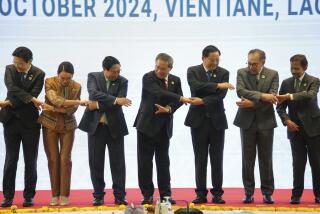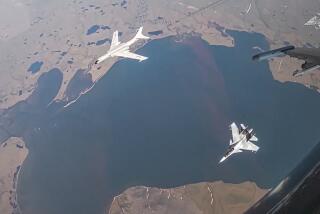China air zone risks miscalculation, distracts diplomacy, experts say

- Share via
With memories of the Soviet military’s 1983 downing of a South Korean commercial airliner still seared in the minds of many, China’s move to control the airspace over disputed islands has stirred fears of another disastrous miscalculation.
Asia experts see little likelihood of an intentional attack on military or civilian aircraft in China’s proclaimed Air Defense Identification Zone, or ADIZ, over the East China Sea, which overlaps Japanese and South Korean airspace claims.
But the risk of accidental engagement in the zone traversed by hundreds of planes each day, the analysts say, has been greatly elevated by China’s unilateral assertion of sovereignty and its demands that all entering aircraft file advance flight plans to Beijing.
Of more immediate peril for the region, they add, might be the diplomatic attention being distracted from other pressing security matters in East Asia, most notably North Korea’s unbridled moves to acquire nuclear weapons capabilities.
“North Korea stands out as the biggest lost opportunity that has emerged as a result of China’s ADIZ announcement,” said Scott A. Snyder, director of U.S.-Korea policy at the Council on Foreign Relations. “Before the announcement, there was the possibility that the United States, China, South Korea and Japan might all be on the same page in pushing North Korea toward denuclearization.”
Joint strategy in tackling that issue had been expected to be front and center during Vice President Joe Biden’s Asia visit this week, Snyder said. Instead, the diplomatic swing through the troubled region has been dominated by the need to reassure allies Japan and South Korea that they can count on U.S. treaty commitments to defend them.
Also on Biden’s agenda during meetings with the leaders of Japan, China and South Korea had been a push to restart annual trilateral summits among the three countries that are East Asia’s biggest economies. China refused to attend this year in protest of Japan’s purchase of the disputed islands, which Tokyo calls the Senkakus, to bolster its claim to the territory under Japanese administrative control for decades. China also claims sovereignty over the uninhabited islets it calls the Diaoyus that are surrounded by rich fisheries and undersea natural gas deposits.
Sheila A. Smith, the council’s senior fellow for Japan studies, describes the dormant trilateral forum as an ideal instrument for resolving the intensifying dispute over China’s Nov. 23 imposition of the air defense zone. But Beijing’s objective in claiming airspace control may be a signal of intent to extend its authority farther in the region, Smith said, deeming it unlikely that China will be eager to resume diplomatic engagement with its rivals.
China has running disputes with six of its neighbors over islands and fishing grounds in the South China Sea. The territory, also rich in oil and natural gas deposits, is claimed in whole or part by China, Taiwan, the Philippines, Vietnam, Malaysia, Brunei and Indonesia. Since Japan renounced sovereignty over the South China Sea islands after World War II, repeated incidents of gunfire exchanges and vessel ramming involving Chinese patrols have occurred in the strategic maritime corridor through which much of East Asia’s energy imports are delivered.
Elevating the territorial disputes to the airways with China’s ADIZ proclamation has stirred concern for the safety of air travel through the region.
“The overlap of the ADIZs means that Chinese and Japanese fighter jets are in the same space, claiming the same mission, defending the same airspace against intruders, or at least policing the same airspace,” said Smith. “The more they are in proximity, the more they have close interaction, the more potential for miscalculation of pilots who have the political goal of defending that airspace.”
The United States, Japan and South Korea have sent military aircraft into China’s proclaimed airspace without notification, which has prompted China to scramble fighter jets to identify the unannounced entrants, officials in Beijing have confirmed. No action has been taken to deter what Chinese authorities portray as “intrusions,” but the lack of clarity on how far Beijing will go to enforce its claim of sovereignty has raised tensions and fears of confrontation.
The Japanese and South Korean governments have advised both military and commercial aviation to ignore China’s demand that they identify themselves before entering the ADIZ. The United States has said its military operations are proceeding unchanged in the airspace, but last week it advised commercial carriers to cooperate with Beijing’s call for flight notification. The Obama administration advisory added, however, that it “does not indicate U.S. government acceptance” of China’s sovereignty assertions.
Japan on Sunday called on the Montreal-based International Civil Aviation Organization to take action against China for its unilateral imposition of new access rules.
A regional forum, like the suspended trilateral group, would be a more effective body for resolving the airspace dispute and alleviating concerns that it could escalate into a security disaster like the downing of the Korean Air Lines Flight 007 30 years ago, however remote that may seem now, Snyder said.
“But under the current circumstances,” he said of the sharpening Chinese-Japanese standoff, “it is a very idealistic hope that that would occur.”
ALSO:
Ukraine protests can’t alter the cost of rejecting Russia
Truck carrying dangerous radioactive material stolen in Mexico
U.S. halts truck shipments through Pakistan amid anti-drone protests
Twitter: @cjwilliamslat
More to Read
Sign up for Essential California
The most important California stories and recommendations in your inbox every morning.
You may occasionally receive promotional content from the Los Angeles Times.











